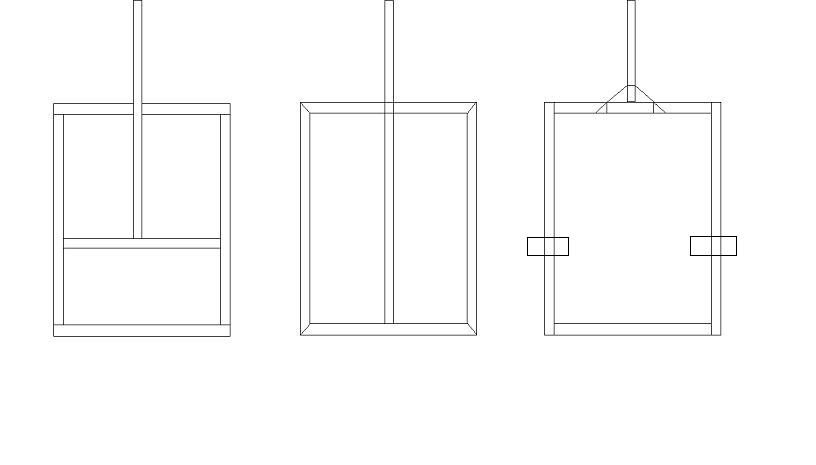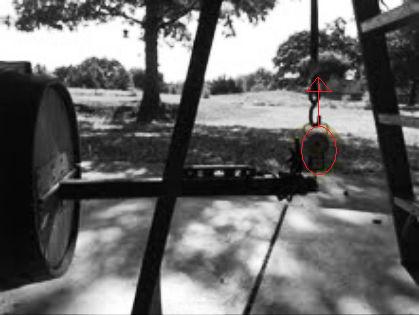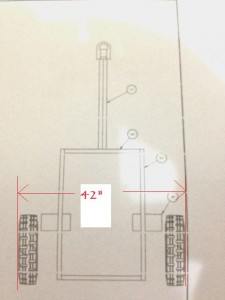How to build a Professional Homemade Pull-Behind Motorcycle Cargo Trailer
Categories: How to guide, Pull Behind Motorcycle Trailer, Trailer Guide, Trailer Parts and Accessories
Building a motorcycle cargo trailer is not as complicated as its seems. When broken down into its most basic components, it’s only a frame on two wheels attached to the back of a motorcycle. Making it look good, is where it gets a little tricky. For the purpose of this article, I’m going to stick to function over form. However, the completed project will look great at a small fraction of what a retail trailer would cost.
Let’s get started. The Framework. Any type of Hot Rolled Steel (HRS) will work fine for this job. I’ve built them out of aluminum before to experiment with weight, but the space required for a solid, no vibrating frame does not offset the additional cost, time, and welding experience required. 2″ x 2″ – 1.5″ x 1.5″ square stock or angle, either or any combo will be fine. The Framework, while important, will not be visible.
There are infinite combinations of layouts and steel. Here are 3 that work great.
Layouts:
*Tip – The most important point of the frame is to keep it square with the tongue. Measure from the two corners opposite the tongue, to the tip of the tongue. this distance needs to be within 1/8″.
Tongue Weight: The amount of force to lift the hitch to a level position.
Pic: This trailer weighs 280lbs (empty) and has 29lbs of tongue weight. (about the weight of a full 5gallon gas can)
Importance of tongue weight: The finished product should have 60%-65% of its Total weight in front of the axle on the tongue. This includes the spare tire, cooler rack, and any gear that is stored inside. Why? Any wind resistance that “hits” the front of the trailer will lift up on the front of the trailer. This “lift” transfers to the rear tire of the bike and is not good for optimal braking (which also lifts on the rear of the bike). I prefer to have 10%-12% of the total weight of the trailer “on the tongue.” That means a 300lb trailer (total weight) should have 30-36lbs of tongue weight.
At this point a choice between a spring-axle and a torsion axle is to be made. Differences?
I have tested and owned both and I prefer torsion axles. They ride smoother and quieter than springs. Generally the trailers also sit lower to the ground which improves on wind resistance and usable space. Torsion axles, independent or full, also last longer than spring systems because there are almost no moving parts. Now the down side. Torsions cost more and are not as serviceable if they fail. Springs can be serviced, cost less, but “bounce down the road” more.
Wheel Base:
Wheel – to –wheel Span. 42” outside to outside. After testing multiple wheel distances, I find that for towing, riding side by side with other rides, and cornering, 42″ is preferable. This provides a sturdy center of gravity for traveling/cornering at higher speeds. *Disclamier: Just because I say it is OK to corner at higher speeds, does NOT mean you need to, or test the limits. These are my own personal riding preferences, yours will be different.
Onward with Torsion Axles. (A few resources are provided at the bottom)
Enclosure or decking?
A flat deck is easy and possibly the cheapest way to go. A flat surface allows for strapping anything down, tents, coolers, and gear. However, no security or weather tight storage come with a flat deck. Wood or steel, the surface should be finished with a waterproof sealant or paint. I have also seen motorcycle cargo trailers with a manufactured wood deck. This tongue and groove decking looks sharp and is maintenance free. For a such a small surface area, the price between the 2 options is small.
Enclosures? Take a look at some of these creative boxes and get some inspiration.
Enclosures. Attaching an enclose to the frame can dress up that homemade job in a hurry. From refrigerators to whiskey barrels (and yes, that is grandma in a wheelchair), options are only limited by the imagination. One of my own trailers and favorites is the banner on this page, a split wooden 50 gallon whiskey barrel. A cheaper option is securing a minivan storage bin (the kind that you see strapped to the roof of a minivan) to the frame. They can usually be found at a home improvement or tractor supply stores.
What’s left? A hitch, chains, lights, and tires. Opting for a chrome hitch and chains can give that bland looking deck trailer a nice shine. For the fiberglass trailers, its does not do the trailer justice to cheap out on these. A few nice looking LED lights, and you are almost ready. Because I have written about the differences and importance’s of these in the recent past, I won’t get to far into it, just check out:
Here are some more pieces to the puzzle:
Ok, I hope this was helpful. If you found it useful, please share it along.
Ride Safe and Get Lost,
Check out these Popular Posts:
- How to Build a Tow Behind Motorcycle Trailer
- Wiring Basics and keeping the lights ON.
- 8 inch trailer tires vs. 12 inch trailer tires
- Simple Plan Ideas – What to do on a budget





